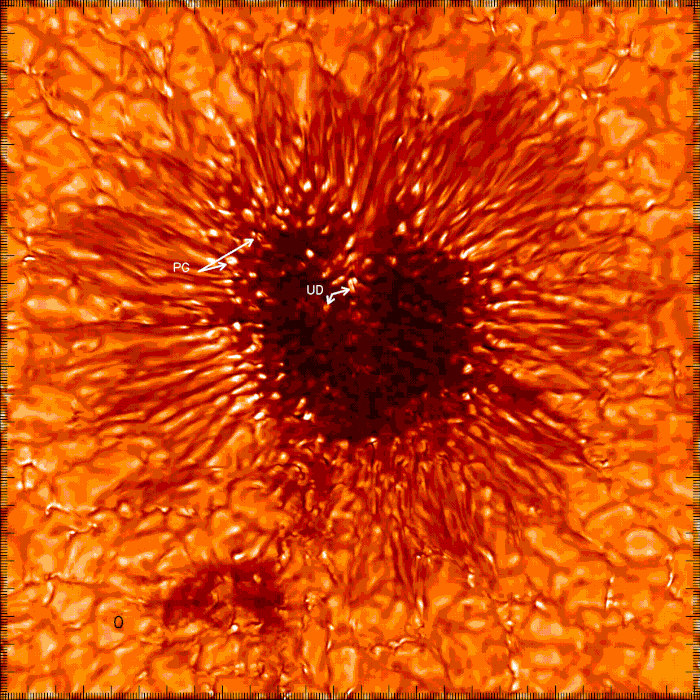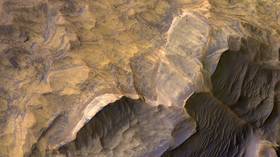Sauron, is that you? World’s largest solar observatory releases incredible, if ominous, close-up of sunspot

Researchers working at the world’s largest solar observatory have shared a test image showing the surface of the sun in unprecedented detail, with more to come as our star enters a possible record-breaking period of activity.
The newly released image was snapped by the Daniel K. Inouye Solar Telescope (DKIST) in Hawaii, which is still under construction. It was taken on 28 January 2020, and is the most detailed ever captured by humanity.

“The sunspot image achieves a spatial resolution about 2.5 times higher than ever previously achieved, showing magnetic structures as small as 20km (12 miles) on the surface of the sun,” said astronomer Thomas Rimmele of the National Science Foundation’s National Solar Observatory.
Each of the ‘scales’ around the sunspot itself is actually a convection cell – areas roughly 1,500km (932 miles) across, with hot plasma erupting from the center that then cools as it flows outwards, creating the patterned effect around the periphery of the sunspot itself.
Also on rt.com NASA captures incredible view of returning giant sunspot (VIDEO)The sunspot, meanwhile, is an area where the sun’s magnetic field gains extraordinary strength, disrupting the normal convection cell activity and preventing the plasma eruptions from bursting forth, maintaining a cooler temperature and thus darker appearance.
The interplay of these shifting magnetic field lines can also create solar flares and coronal mass ejections, which can interfere with life here on Earth, given the vast quantities of energy and radiation released.
These events can interrupt satellite activity, navigation systems and even knock power grids offline in rare cases. Monitoring these types of solar activity is therefore incredibly important, and the immense detail of the images captured by DKIST during just its testing phase already shows tremendous promise.

The image captures an area 16,000km (10,000 miles) across, meaning the entire Earth (which has a diameter of 12,756km, or 7926 miles) could fit inside.
The solar system is currently entering a period of heightened solar activity, which happens every 11 years or so, marked by a significant uptick in solar flares and sunspots.
This powerful new solar observatory will allow us to monitor one of these cycles like never before in the history of our civilization.
Think your friends would be interested? Share this story!














